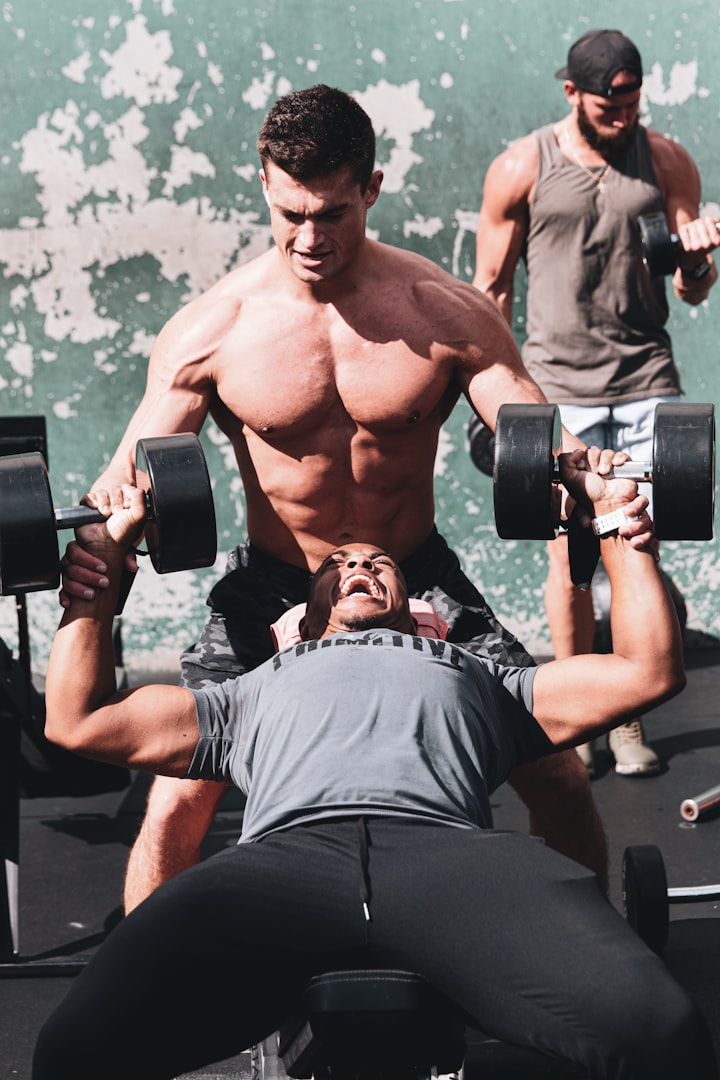Mastering Upper Chest Dumbbell Exercises: Progression Strategies for Maximum Gains
Unlock the Power of Your Upper Chest: Effective Strategies to Maximize Gains with Dumbbell Exercises

Developing a well-rounded and aesthetic chest is a goal for many fitness enthusiasts. While traditional flat bench presses and push-ups can help build overall chest strength, targeting the upper chest specifically can create a more balanced and chiseled look. Dumbbell exercises are an excellent choice for targeting the upper chest muscles, as they allow for a greater range of motion and provide a higher level of stability compared to barbell exercises. To maximize gains in your upper chest, it's essential to follow a progressive approach that challenges your muscles and promotes continuous growth. Here are some effective strategies to progress upper chest dumbbell exercises for maximum gains.
Start with Proper Form: Before diving into advanced techniques, it's crucial to master the basic form of upper chest dumbbell exercises. Proper form ensures that you are effectively engaging the target muscles and minimizing the risk of injury. When performing exercises such as incline dumbbell presses and incline dumbbell flyes, maintain a stable and neutral spine, retract your shoulder blades, and focus on a controlled and deliberate range of motion.
Gradually Increase Weight: Progressive overload is the cornerstone of muscle growth. As your muscles adapt to the stimulus provided by a particular weight, it's important to gradually increase the load to keep challenging them. Start with a weight that allows you to complete 8-12 repetitions with proper form and gradually increase the weight as you become stronger. Aim to reach a point where you can perform 4-6 challenging repetitions while maintaining good technique.
Vary Repetition Ranges: To continually challenge your upper chest muscles, vary your repetition ranges during your training sessions. Incorporate both higher-repetition sets (12-15 reps) and lower-repetition sets (4-6 reps) into your routine. Higher-repetition sets help build muscular endurance, while lower-repetition sets promote strength and hypertrophy. By incorporating a mix of rep ranges, you stimulate different muscle fibers, leading to overall muscle development.
Implement Progressive Overload Techniques: In addition to increasing weight, there are various techniques you can employ to progress upper chest dumbbell exercises. One effective technique is the "Double Progressive" method, where you aim to increase either the number of repetitions or the number of sets before increasing the weight. For example, start with 3 sets of 8 reps, and once you can perform 3 sets of 12 reps with proper form, increase the weight and go back to 3 sets of 8 reps.
Focus on Eccentric Training: The eccentric phase of an exercise, also known as the lowering or lengthening phase, is when the muscle lengthens under tension. This phase is particularly effective for muscle growth. Slow down the eccentric portion of your upper chest dumbbell exercises, taking around 3-4 seconds to lower the weight. This time under tension places greater stress on the muscle fibers, leading to increased muscle damage and subsequent growth.
Incorporate Advanced Variations: As you become more advanced, introduce advanced variations of upper chest dumbbell exercises to further challenge your muscles. These may include incline dumbbell press with a pause at the bottom, incline dumbbell squeeze press, or incline dumbbell pullovers. These variations recruit different muscle fibers and add variety to your workouts, stimulating further muscle growth.
Allow for Sufficient Recovery: Remember that muscle growth occurs during periods of rest and recovery. Ensure you're allowing enough time between workouts for your upper chest muscles to recover and repair. Aim for at least 48 hours of rest before targeting the upper chest again. Getting adequate sleep, consuming a balanced diet, and staying hydrated are also essential factors in optimizing recovery and maximizing gains.
By implementing these strategies, you can progressively challenge your upper chest muscles, stimulate growth, and achieve maximum gains. Remember to prioritize proper form, gradually increase weight, vary repetition ranges, incorporate progressive overload techniques, focus on eccentric training, introduce advanced variations, and allow for sufficient recovery. Consistency and patience are key when it comes to building a well-developed upper chest, so stay dedicated to your training and enjoy the journey towards achieving your goals.





Comments
Adam Evans is not accepting comments at the moment
Want to show your support? Send them a one-off tip.